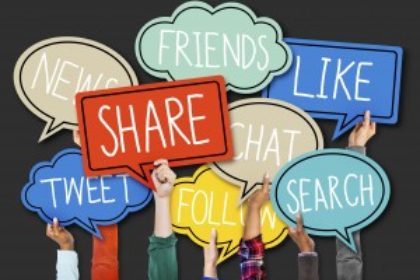
The success —or failure —of a piece of content is no longer determined only by its quality.
The shareability of content now plays a major role in how the content is received and perceived by your audience. The promotion and sharing of content cannot be an afterthought. In order to maximize traffic and increase engagement, planning your promotion and sharing strategy should be a central part of your overall content creation process.
Here are 10 tips for increasing the shareability of your blog posts, white papers, tip sheets,and any other content:
- Create relevant content.
If your content isn’t relevant, no one will share it. It is as simple as that. Increase your chances of getting shares by creating content that your audience will find useful, interesting,and entertaining. This can include tip sheets and blog poststo industry-specific success stories and even humor.
- Add visuals.
Content with visual elements can generate up to 94 percent more views than a plane-Jane text postaccording to a report from MDG Advertising. Posts with visuals are also 37 percent more likely to garner engagement – such as re-tweets, favorites, shares,and likes from your target audience.
If you’re thinking “My content isn’t visual,” or“I don’t have anything visual to add,” think again. There are a lot of great tools;both free and inexpensiveyou can use to create interesting visual elements to go with your content. Canva.com has templates to create visuals for Facebook, Twitter,and Pinterestas well as a host of other DIY graphic design tools. Others to try include Piktochart for infographics or Wordle for word clouds.
- Add share buttons.
People are more likely to share your content if it is easy to do so. This means having social media share buttons on your blog. If you are unsure of how to do this,start by going toShareLinkGenerator.comwhere you can instantly create sharing links for the most popularsocial media platforms.
- Use lists.
Lists are among the most-shared items on social media. Lists are nice little packages of information and they are easy to read. The Huffington Post reported that list articles on the website get an average of 10,000+ shareswhile all other content analyzed generated an average of only about 6,000 to 7,000 shares. Ten is the go-to number for lists because it is nice and round;not too long and not too short.
- Ask people to share.
This doesn’t mean you have to flat out say “share this,” although you can take that approach. Asking people to share your content can take the form of “help spread the word,” “Share your thoughts,” or “Invite your friends.”
- Insert “Click to Tweet”buttons next to cool stats or interesting tidbits.
This tip is especially useful if you find your audience spends most of their time on Twitter. This nifty little tool can be inserted next to interestingquotes, statistics or other key information. To use the tool, pick out the text you think is tweet worthy and create a unique link for it here https://clicktotweet.com. The site even allows you to track your links over time.
- Post on the right channels.
Find out where your audience is spending their time and post to those platforms. If your customers are pinning on Pinterest, then make sure you aretoo. If you’ve gotten little to no engagement on Twitter, then don’t spend too much time worrying about those 140 characters.
- Post more than once.
The shelf life of your Facebook posts and tweets is so short that it almost makes you wonder how anyone sees them at all. The Huffington Post found after three days, on all social networks, the number of shares dropped at least 96 percent for the next 4 dayswith Facebook shares dropping the mostand G+ and Pinterest dropping the least. So,post more than once (at least) to your most popular channels and reuse evergreen content every few months.
- Reward and engage with your sharers.
If your followers are commenting, asking questions or participating with your posts,then you need to encourage that behavior with positive reinforcement. This means commenting back, liking their comments,and acknowledging theyare an integral part of the two-way conversation that social media promotes.
- Have fun and be entertaining.
Showing the human side of your organization isn’t a bad thing;in fact, it helps strengthen the relationship between you and your customers. Having fun, sharing a picture of your staff being silly or incorporating a mild-mannered meme into your marketingcan be a nice break from the often-serious business world and it givesyour customers a glimpse into what it is like to work with you. Have fun and your customers and potential customers will have fun with you.